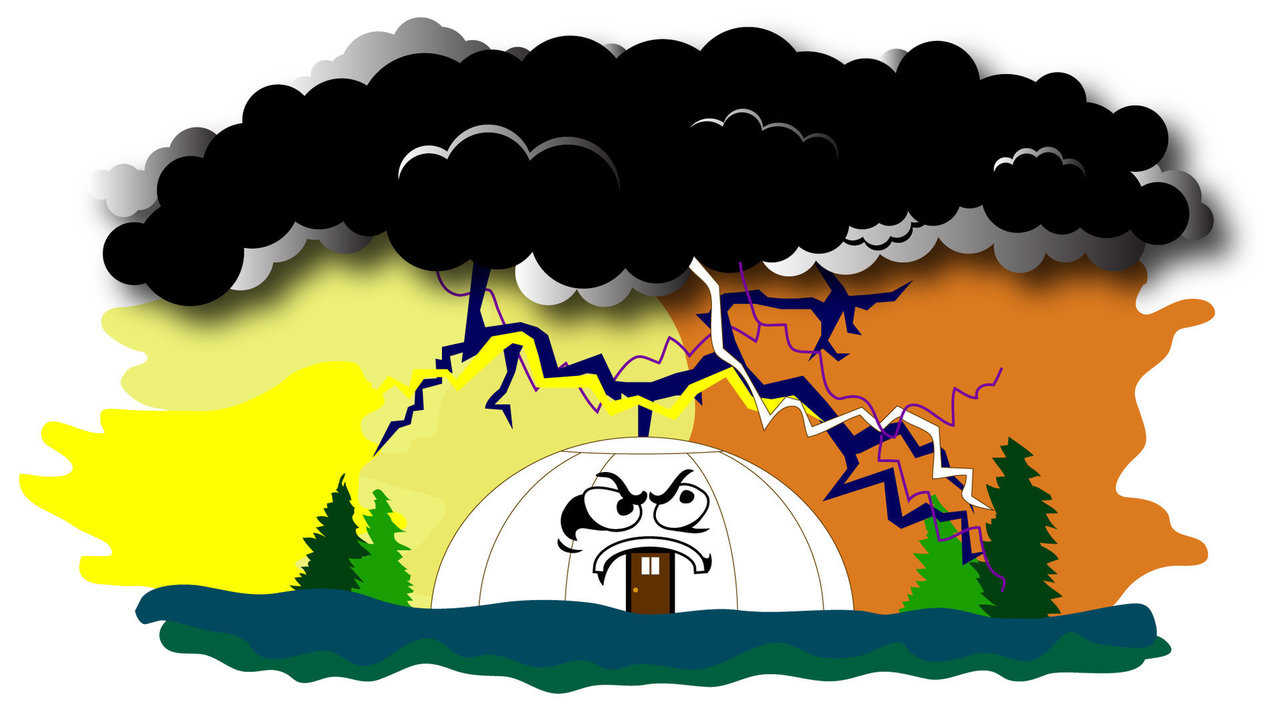Lightning
The ancient Greeks believed that lightning was the wrath of Zeus. The Vikings thought it was produced by Thor riding through the clouds. Some Native American tribes credited lightning to a mystical bird with flashing feathers.
Of course we know better. Science has defined lightning for us. According to a National Geographic website, lightning is an electrical discharge between positive and negative regions of a thunderstorm. While there are different kinds of lightning, the most damaging and dangerous kind is cloud-to-ground lightning. Its bolts can have temperatures that are hotter than the sun. More importantly, it’s estimated that lightning strikes the earth’s surface about 100 times every second. Each year, just in the United States, it kills nearly 100 people, injures many others and damages millions of dollars of property.
So what will lightning do to a Monolithic Dome? Based on the evidence we have gathered so far and on the opinions of experts we have questioned, not much of anything.
Eureka, Kansas
In 1979, Boyd and Maxine Stewart moved into the second Monolithic Dome home ever built. Located in Eureka, Kansas – a thunderstorm-prone area – their dome has a diameter of 50 feet and a height of 20 feet.
Boyd said that during one severe storm, their dome was hit by a crash of thunder and lightning that seemingly hit at exactly the same moment. Suddenly, lightning lit the inside of the dome, and at the same time a thunder clap was heard.
Boyd knew that lightning had either struck his house or somewhere very near it. He ran outside. Near the dome’s top, he saw a thin wisp of smoke. Boyd got a ladder and climbed up for an inspection. He found a charred hole about the size of a finger that had penetrated the Airform and gone into the polyurethane foam insulation. But he could not determine if the concrete was affected as well.
So Boyd simply decided to repair the damage. He got his caulking gun, filled the hole with caulk, and that was the end of that.
South Gate, Michigan
In the early eighties, Monolithic built a large church in South Gate, Michigan. Since that area also got many thunderstorms, I consulted a lightning expert at the local power company. I asked this engineer, who worked on lightning directing gears all over the world, if the polyurethane foam would protect the dome. He said, “No” and added that, when it comes to lightning, air is the better insulator.
According to this expert, after lightning travels for several miles through the air, another three inches of foam will not deter it. It’s headed for the ground and anything between it and the ground can be struck.
Nor could he see any valid reason for putting a lightning rod on the dome. He said that the lightning rod could act as an attractor, but that did not guarantee that lightning would strike it. Bolts could strike elsewhere.
But what the expert did like about the Monolithic Dome was its rebar cage. He said that the rebar cage gives the dome virtually ultimate protection from lightning. A bolt would enter the rebar cage, follow its connections and travel through it till it reached the footing that goes into the ground. Because the rebar was such a good conductor, any resultant damage would be minimal.
Ten years later …
I talked with the maintenance supervisor at that church. He told me that one summer, while they were washing the dome, a worker noticed four holes about the size of a finger. The holes were not causing any leaking, but one did look charred. At first, they thought bullets might have caused the damage, but they knew of no shooting incidents. They then decided that lightning must have been the culprit. Like Boyd Stewart, they repaired the damage by filling the holes with caulking.
In addition to the power company engineer I talked with in South Gate, I have questioned several more experts about the Monolithic Dome’s vulnerability to lightning. Their answers are much the same: Lightning strikes will mean virtually nothing to a Monolithic Dome. The bolts will not crack the dome like they often crack power poles or trees or other well-grounded structures. The Monolithic Dome’s grounding, provided by its rebar cage, protects it from that kind of serious lightning damage.
originally published May 2004
